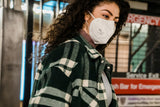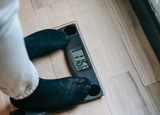
In this new article from the Physio interview preparation series, we thought we could have a look at a specific question from a recent Paediatrics interview and suggest elements for a possible answer, so you could see what sort of stuff interviewers are looking for.
All articles from the Physio Interview Preparation blog series ››
NB: Be aware that this is only a single example of a question and its suggested answer, and depending on the type of job, the place of work, or even the interview panel members, you might need to adapt and/or provide other elements in your answer to get all the points.
If you'd like to know more, see other questions and answers, and even have a go at practising them, you can grab our interview preparation packs or book on one of our one-to-one sessions.

Paediatrics, the forgotten rotation
Paediatric physiotherapy is one of those specialities that you can spend your whole career by-passing (...or avoiding).
Not all university programmes in the UK have a specific module for Paeds. Some do, some might have a couple of seminars on it, and some might only briefly mention the topic during other modules that could interlink (e.g: respiratory, neurology...).
The same goes with placements and rotations. Paediatrics tends to be optional and in many cases only available as an elective placement or as an add-on rotation.
Working with children is indeed different to working with adults. You can come across many conditions specific to kids (e.g: talipes), but also some that will seem similar to adults (e.g: an ACL repair, Cerebral Palsy...) but will require a different management or approach.
Physios who have an interest in paediatrics often have to put in a little more effort than their counterparts to gain experience. This is not impossible and there are still a wide range of opportunities out there for you, when you know where to look, which we highlight in our Paediatrics Pack.
So whether you have landed an interview for a job that has a paediatric rotation in it, or you are actively pursuing a paediatrics career, here's what a Paeds interview question can look like - and how to answer it. For more, check out Lara's Paediatrics Physio pack.
Okay, here's our question:

Could you talk to us about the differences in the
respiratory system in a child vs an adult?
Rib cage and chest shape
The infant thorax is cylindrical and not elliptical as in adolescents or adults. The nribs are more cartilaginous in the infant and subsequently the chest wall is more compliant. The position of the ribs is also more horizontal and therefore there is no ‘bucket handle’ action during respiration up to the age of 2 years. Without this movement the infant is completely reliant on its diaphragm for inspiratory and expiratory phase. The intercostal muscles are poorly developed in infancy and contraction of the intercostal muscles is inefficient. Increased ventilatory requirements have to be met by increasing the respiratory rate rather than depth. In addition to this, during rapid eye movement sleep there is a reduction in postural tone and tonic inhibition of the infant’s intercostal muscles such that the rib cage is even less well equipped to counteract the contraction of the diaphragm during inspiration
Diaphragm
The angle of insertion of the infant diaphragm is horizontal, placing it at a mechanical disadvantage. The infant diaphragm has a lower relative muscle mass and a lower content of high-endurance muscle fibres, and thus is much more vulnerable to fatigue. Excessive muscle fatigue can result in apnoea.
Preferential nasal breathing
In young infants the airway is prone to obstruction due to the fact that they are mainly nose breathers. Even a small amount of swelling or obstruction of the nasal passages of infants compromises breathing considerably and causes a disproportionate and detrimental effect on the work of breathing.
Position of larynx
In the newborn infant, the larynx and hyoid cartilage are higher in the neck and closer to the base of the epiglottis, being at the level of C3 in a premature infant and C4 in a child compared with C5-6 in the adult. Its high position enables the infant to feed and breathe simultaneously for approximately the first 4 months of age.
Airway diameter
The neonatal trachea is short and the diameter of an infant trachea is only about one-third that of an adult.
Bronchial walls
The cartilaginous support of an infant’s airways is much less than that of an adult, and predisposes the airways to collapse. The bronchial walls contain proportionally more cartilage, connective tissue and mucous glands than do those of adults, but less smooth muscle; this makes the lung tissue less compliant. At birth the cilia are poorly developed, which increases the risk of secretion retention, especially in the premature infant. The combination of the above, results in a higher incidence of occlusion, airway collapse and difficulty clearing secretions.
Alveoli and surfactant
The respiratory system is not fully developed at birth and postnatal maturation continues for a significant time. The smaller alveolar size of an infant makes the infant more susceptible to alveolar collapse, and the smaller number of alveoli reduces the area available for gaseous exchange. The premature infant, who lacks surfactant, demonstrates a further significant decrease in respiratory compliance.
Collateral ventilation
Collateral ventilation is the means by which a distal lung unit can be ventilated, despite blockage of its main airway. Collateral ventilatory pathways are achieved by a network of interconnecting pathways linking different structures. None of these pathways exist at birth. The collateral ventilatory channels between alveoli, respiratory bronchioles and terminal bronchioles are poorly developed until 2-3 years of age, predisposing toward alveolar collapse.
Internal organs and lymphatic tissue
The lymphatic tissue may be enlarged in the infant and the tongue is also relatively large. These factors may contribute to upper airway obstruction. The heart and other organs are also relatively large in infants leaving less space for lung expansion. The heart can occupy up to half the transverse diameter of the chest in chest x-rays.
Ventilation and perfusion
Ventilation is opposite to adults. They do not have rigid rib cages, so in sidelying as the ribs are squashed so the underlying lung is compromised, therefore the upper lung receives better ventilation whilst the squashed lung has preferential perfusion.
Oxygen consumption, cardiac output and response to hypoxia
Infants have a higher oxygen requirement due to their higher resting metabolic rate compared to adults. Children have a higher cardiac output and oxygen consumption per kilogram than adults. They support this higher output with a higher baseline heart rate but lower blood pressure. Stroke volume in infants is relatively fixed and the only way of increasing cardiac output is by increasing heart rate. An infant responds to hypoxia with bradycardia and pulmonary vasoconstriction, whereas the adult becomes tachycardic with systemic vasodilation. During the neonatal period stimulus such as hypoxia or acidosis this may allow reopening of the anatomical closure of the foramen ovale or the ductus arterious, resulting in increased hypoxia.
Response to cold
All of these factors will impact how you approach a respiratory patient in the paediatric population, both for your assessment and your treatment. To complement this type of question you should brush up on respiratory assessment of the paediatric patient and signs and symptoms of paediatric respiratory distress.
Find more questions and answers as well as reading lists and a whole bunch of tips and resources for your upcoming Paediatrics interview and future job in our Paediatrics pack:
Paediatrics interview preparation pack
Our Paeds pack is designed for Band 5 / Band 6 Physios applying for positions within Paediatrics. It includes interview questions and answers, key resources and top tips for the job, amongst others.
Check out all our available interview preparation packs here.

One-to-one interview preparation & career advice sessions
Bespoke guidance when you need it the most. If you feel like you need to talk face-to-face to one of our staff about your career plans, interviews, or anything else physio-related, we offer personalised skype calls and appointments with our Specialist Physios. This can take the format of mock interviews to help you prepare for your upcoming interview.
____________
About the author
Lara Garzón
Lara is a Spanish physiotherapist who has been working in the UK for the past 5 years. Having worked as a rotational physiotherapist over here, she's had experience in a wide range of specialities and now works as a Band 6 Physiotherapist in Paediatrics.
-




